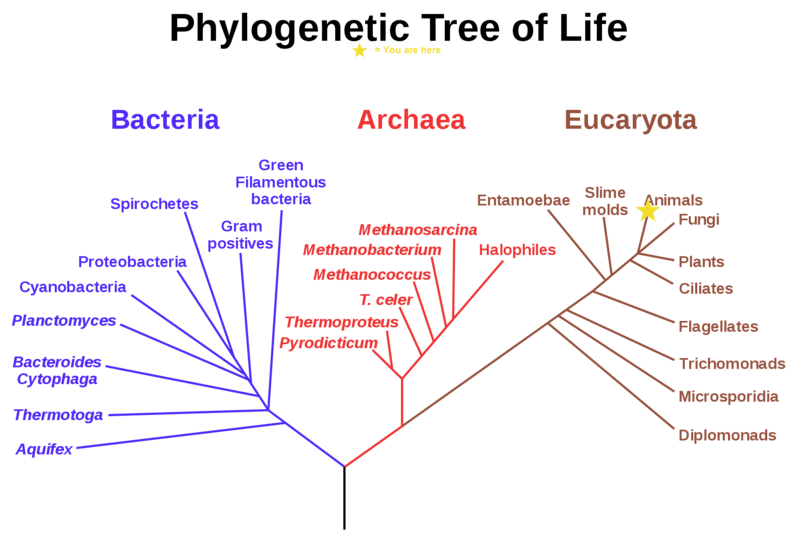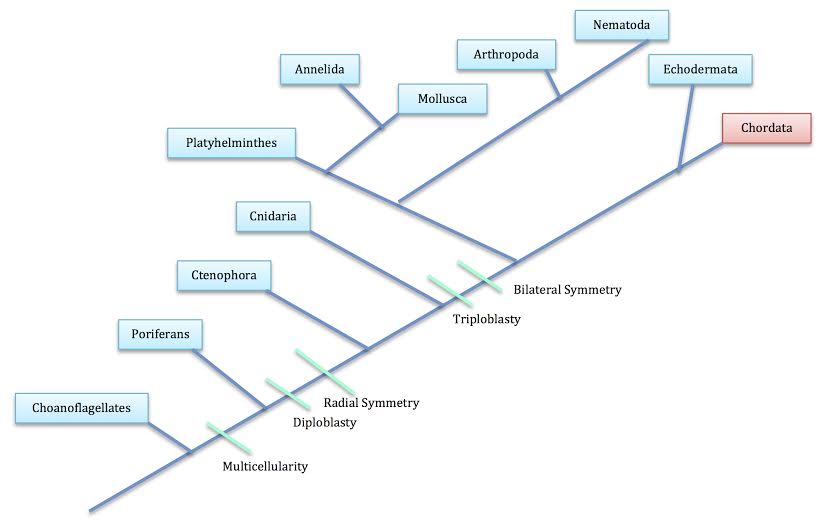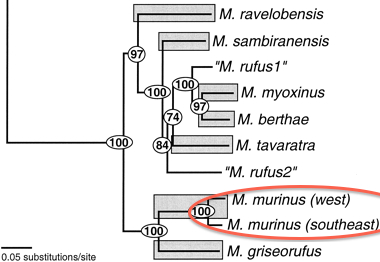Classification
Domain:
Eukarya
Kingdom: Animalia
Phylum:
Chordata
Class:
Mammalia
Order:
Primates
Family:
Cheirogaleidae
Genus:
Microcebus
Species:
Microcebus murinus
Domain: Eukarya
The Eukarya domain is a large taxon consisting of organisms that
have cells containing DNA inside of a nucleus and membrane bound
organelles. Check out another member of the Eukarya, the
Alabama Cave Shrimp!
Kingdom: Animalia
Animalia are eukaryotic organisms that are heterotrophic, meaning
that animals must consume other organisms to make energy. They also
have cells that lack walls for mobility. Check out other oragnisms
in Kingdom Animalia including the
Dusky Footed Woodrat, the
Silky Anteater, or the
Ribbon Flatworm!

The above phylogeny represents where the Microcebus murinus
is grouped in relation to other Animalia. It is a member of Phylum
Chordata. Keep reading to learn why this species is a member of this
phylum.
Phylum: Chordata
Chordata is a phylum of the Animalia kingdom. Chordata are
triploblastic, which means they consist of three intricate types of
tissues called the endoderm, mesoderm, and ectoderm. Chordates have
one bilateral line of symmetry. Other organsims that share this
charcteristic are the
Arctic Fox and the
Southern Right Whale.
Class: Mammalia
Mammalia is a class containing animals with vertebrates that have
hair. Most mammals undergo live births and young offspring are
temporarily fed with milk that is produced in the mother’s mammary
glands (Encyclopedia of Life 2014). Other cool mammals include the
California Meadow Vole and the
Red Fox.
Order: Primates
Primates derived from ancestors that were arboreal, meaning they
lived in trees. Most modern arboreal primates reside in trees,
although some Primates are terrestrial. Primates are considered be
highly adaptable, but with the exception of humans, are mostly found
in the tropical forests of Asia and Africa (Encyclopedia of Life
2014). Check out two other
primates, the
Hainan Gibbon and the
Pygmy Marmoset!
Family: Cheirogaleidae
Cheirogaleidae is a family of primates that contains about 30
relative species of lemurs, including the world’s smallest known
primate. Primates in this family are nocturnal and move with all
four of their legs. Cheirogaleids are also characterized by having
rather short limbs relative to their body length. Some Cheirogaleids
hibernate during specific times of year (Encyclopedia of Life 2014).

This phylogeny illustrates how the Microcebus murinus is
related to other members of the Microcebus Genus.
Genus: Microcebus
The genus of Microcebus is made up of mouse lemurs of the
Cheirogaleida family that are nocturnal and native to Madagascar.
Mouse lemurs are about 27 centimeters long from the top of their
head to the end of their tail (Encyclopedia of Life 2014).
Species: Microcebus murinus
The Latin scientific name of Microcebus murinus is known by the
common name, gray mouse lemur.
Now let's explore this organisms habitat!
Or click here to go back to the Home page.
Taxonomy from (Wilson, et al. 2005)